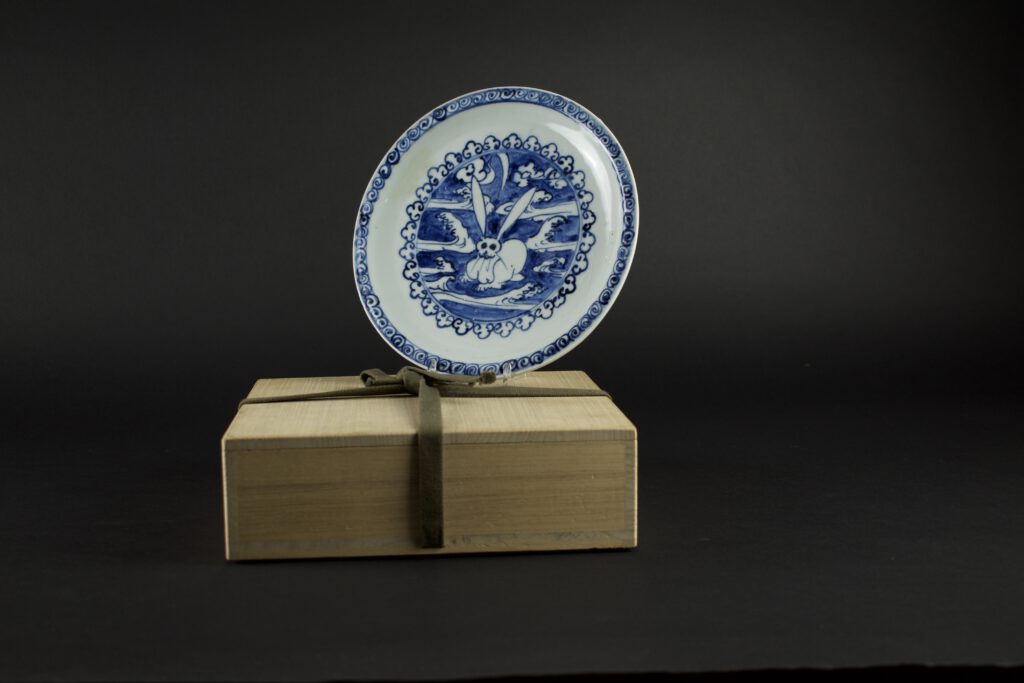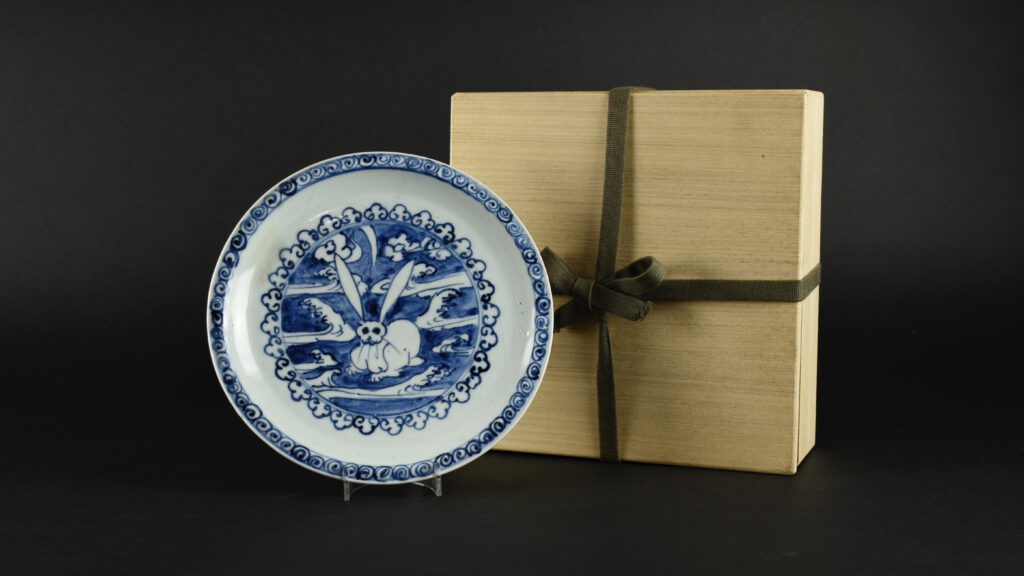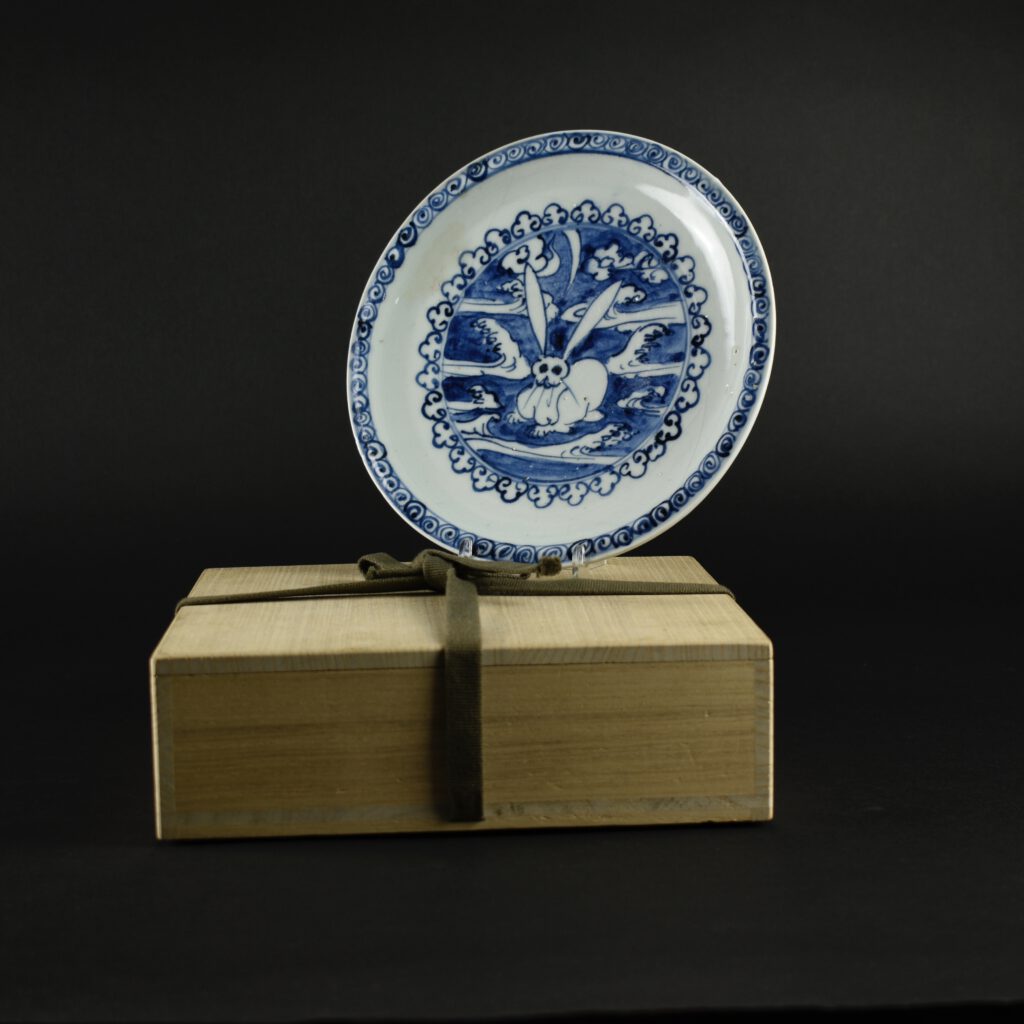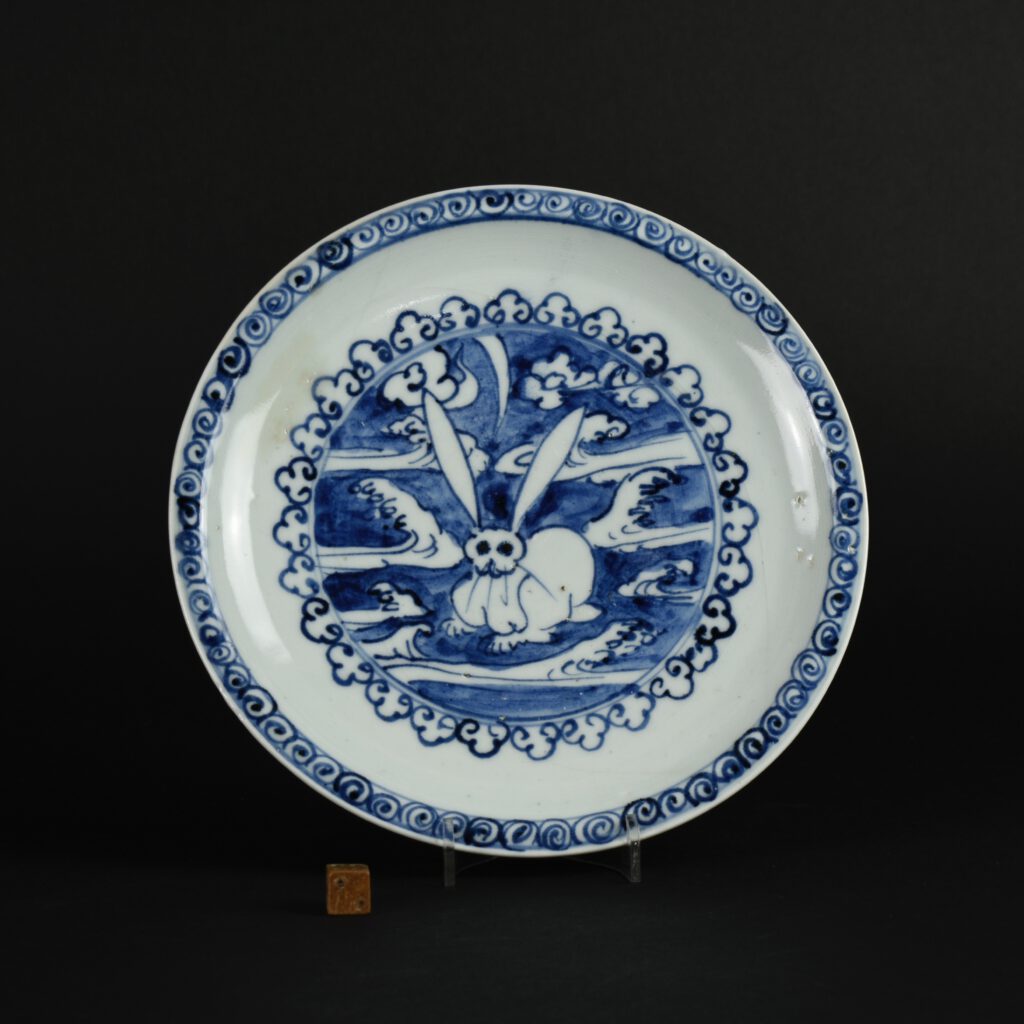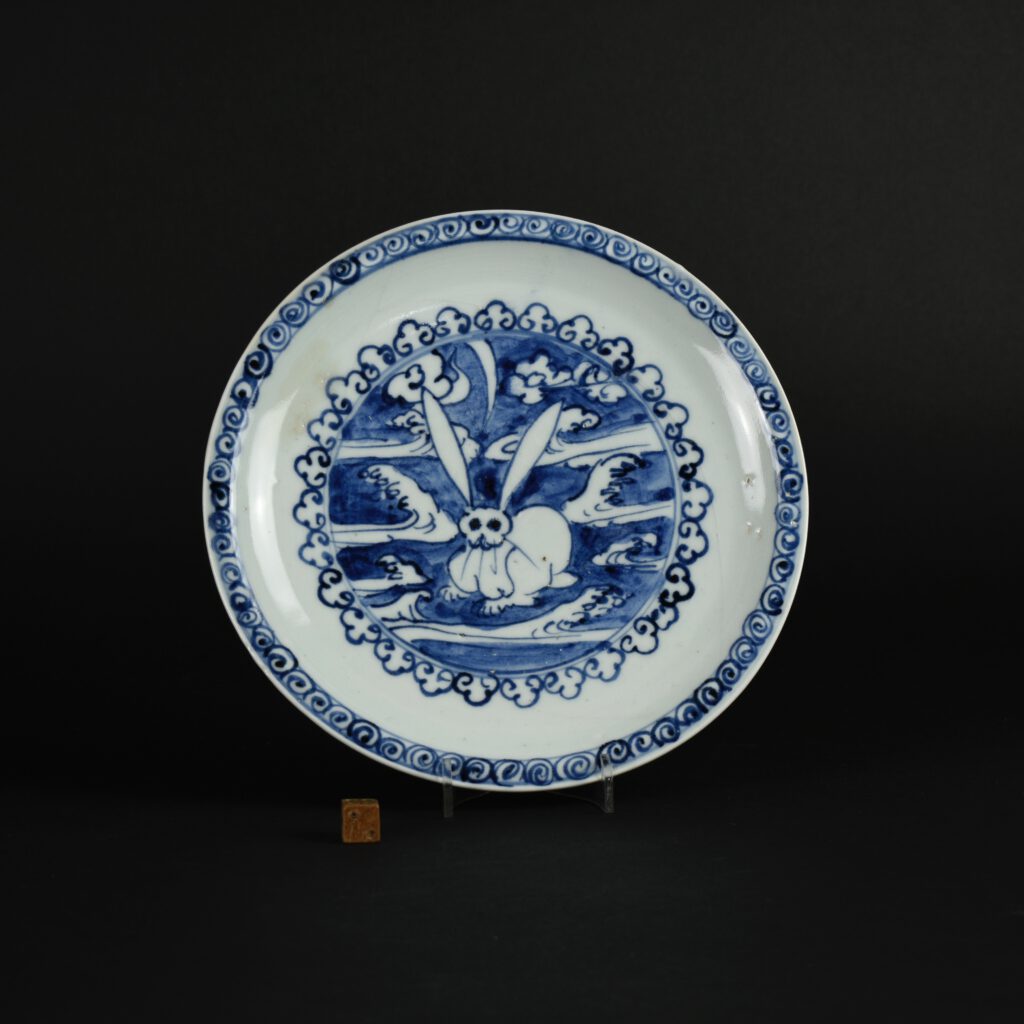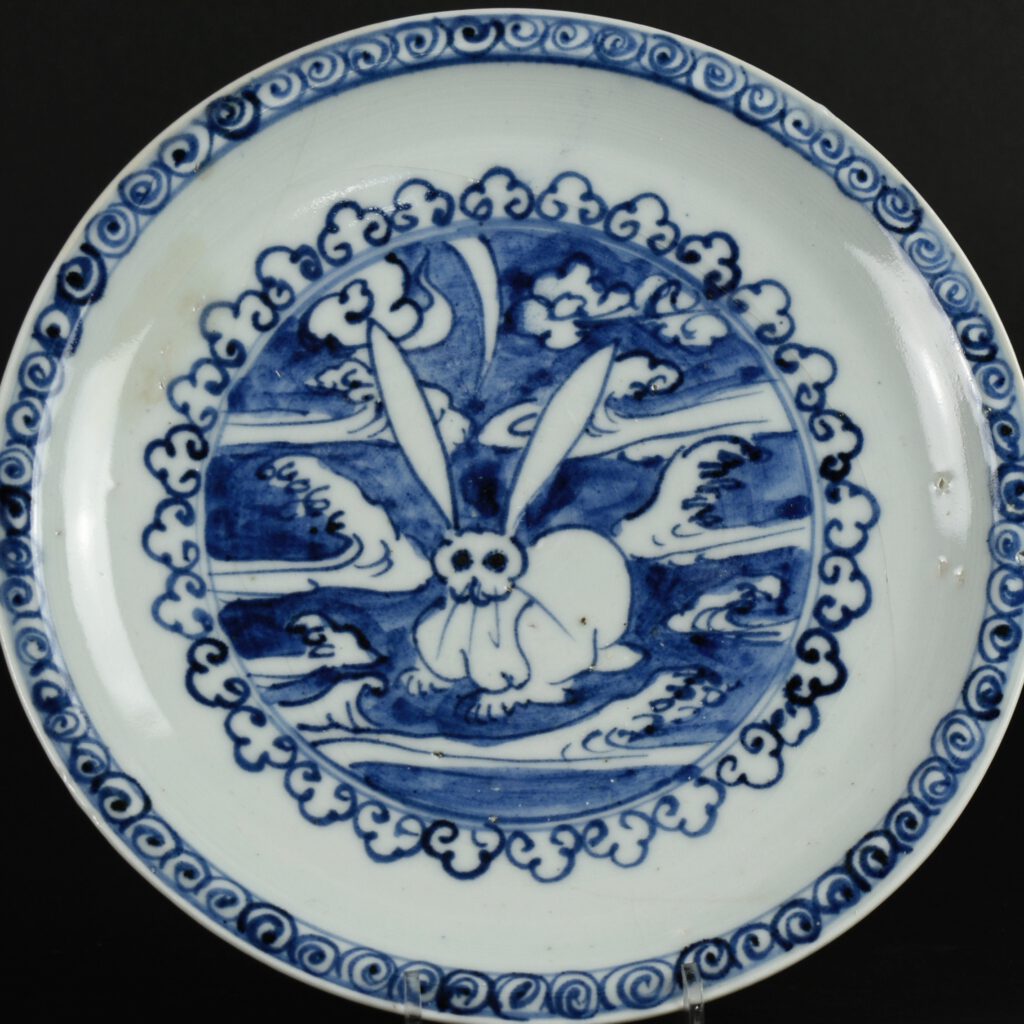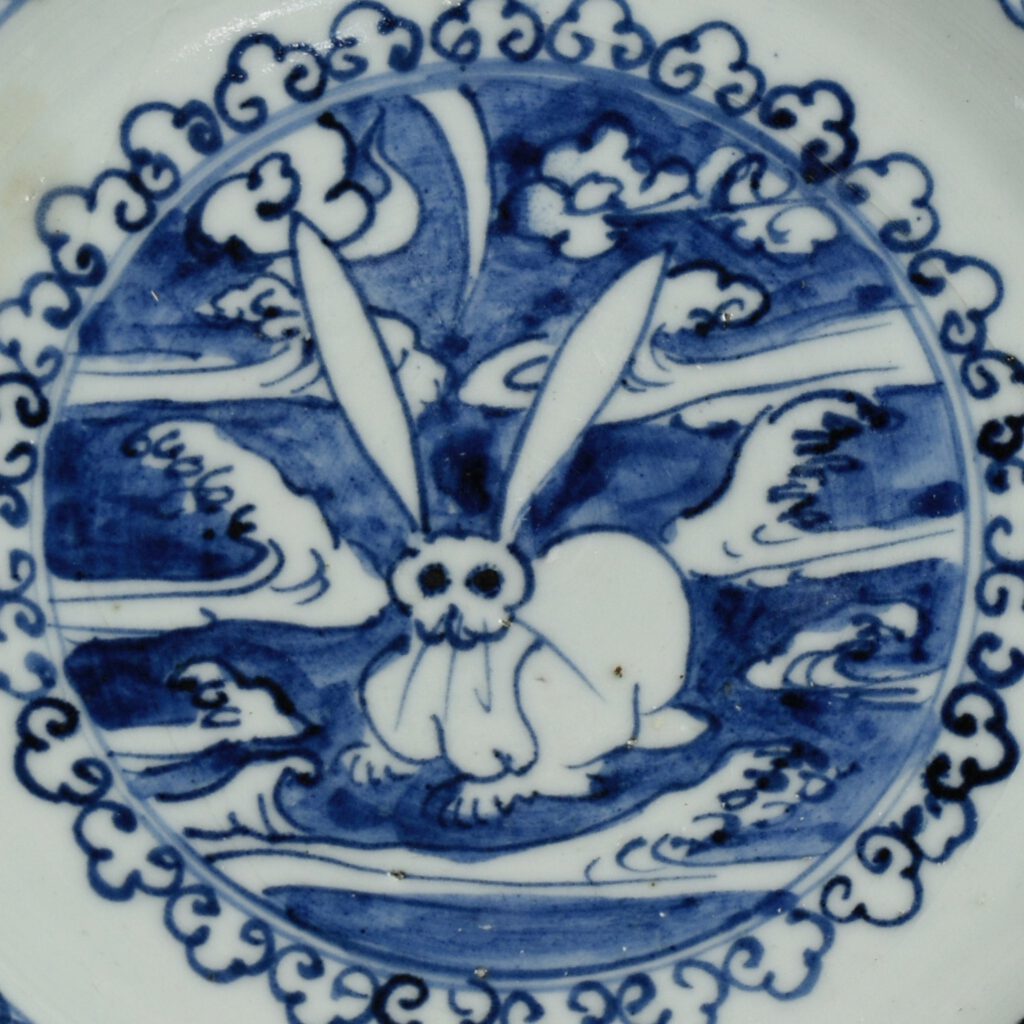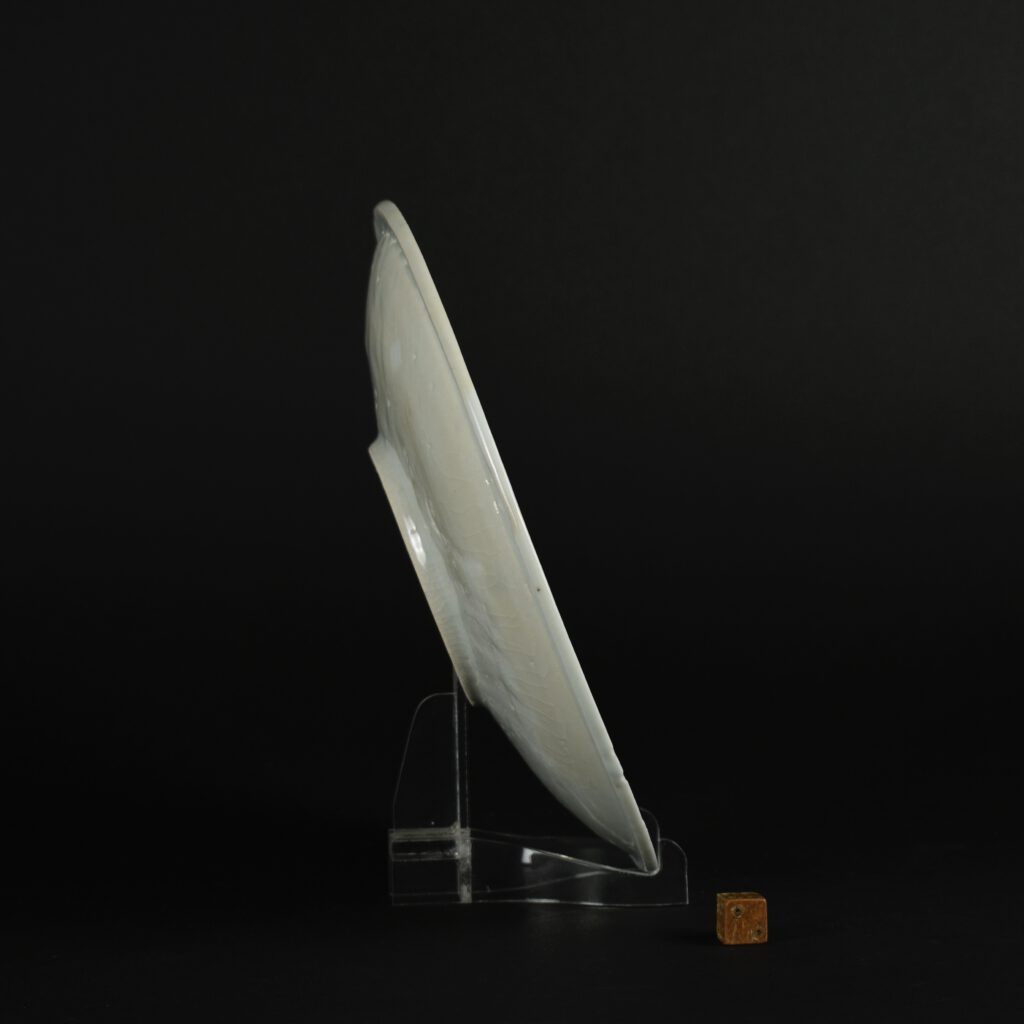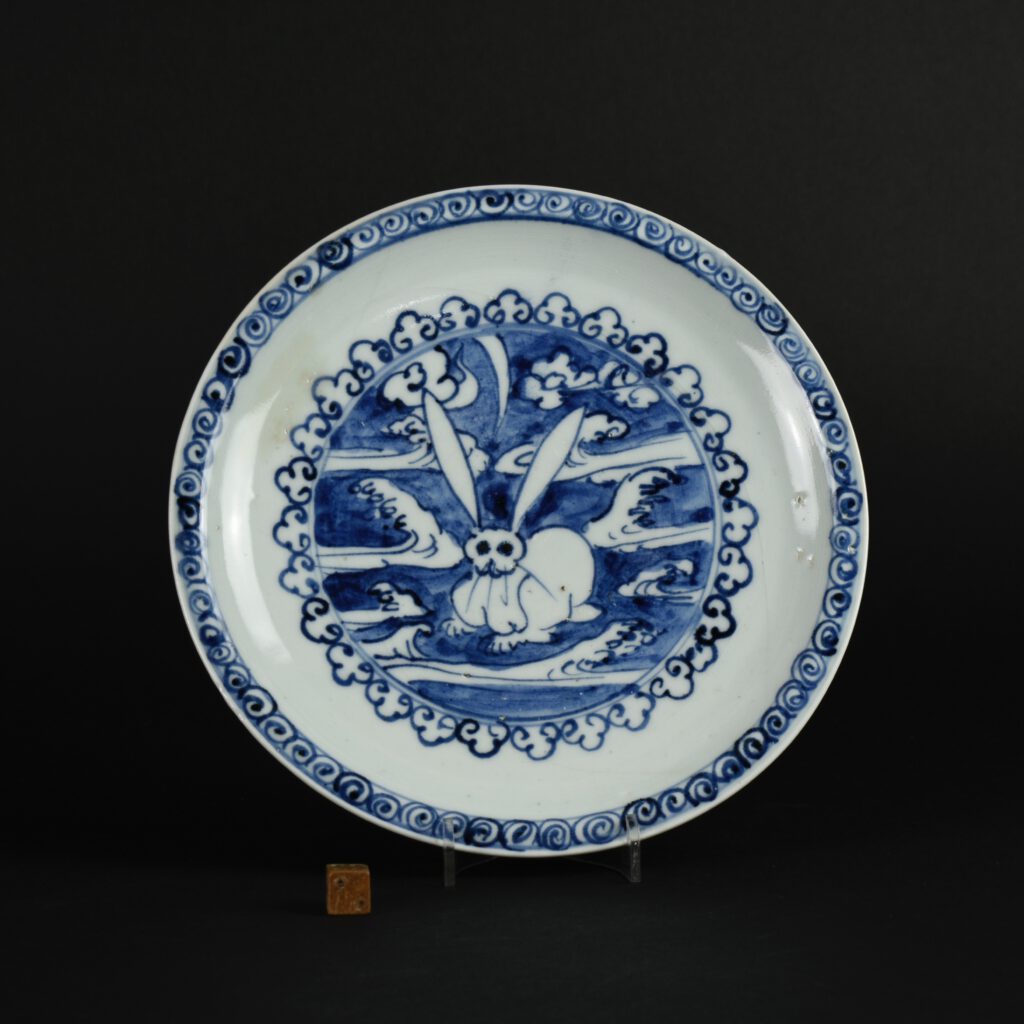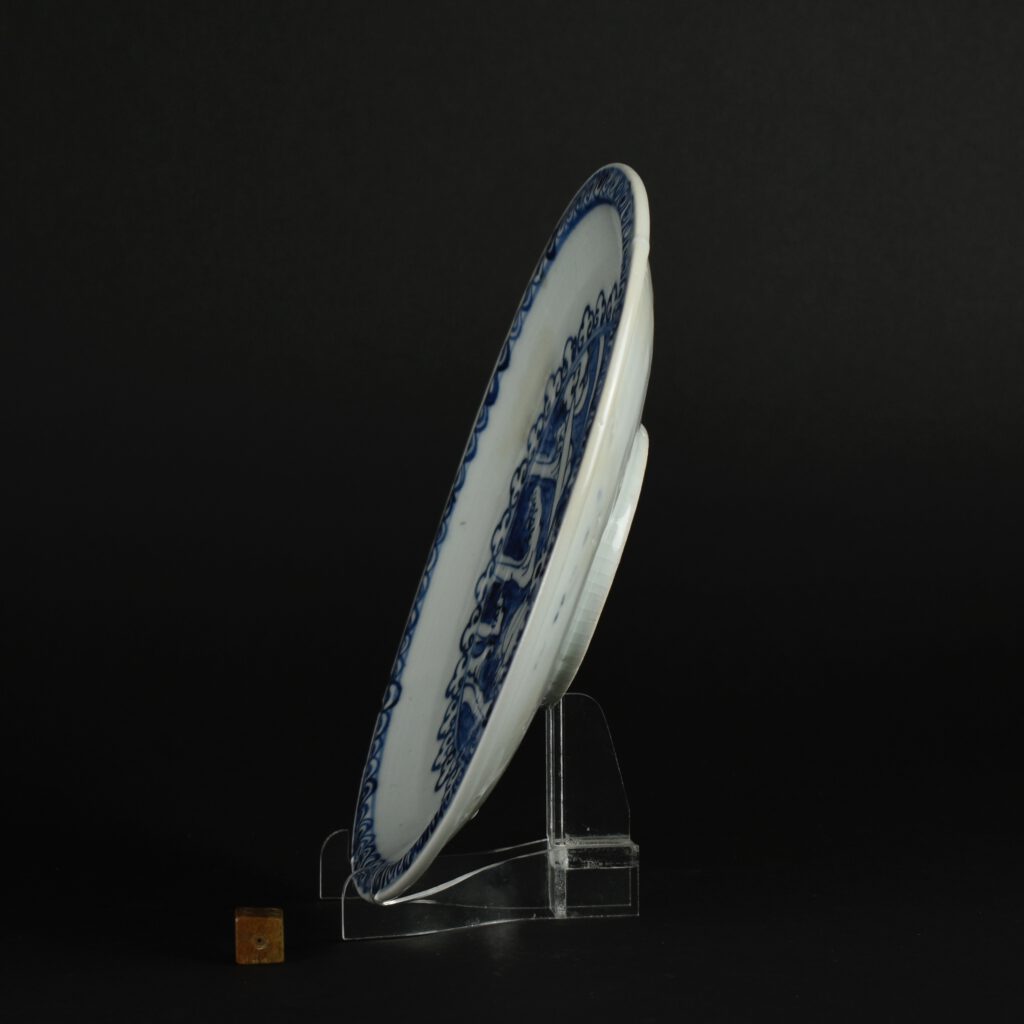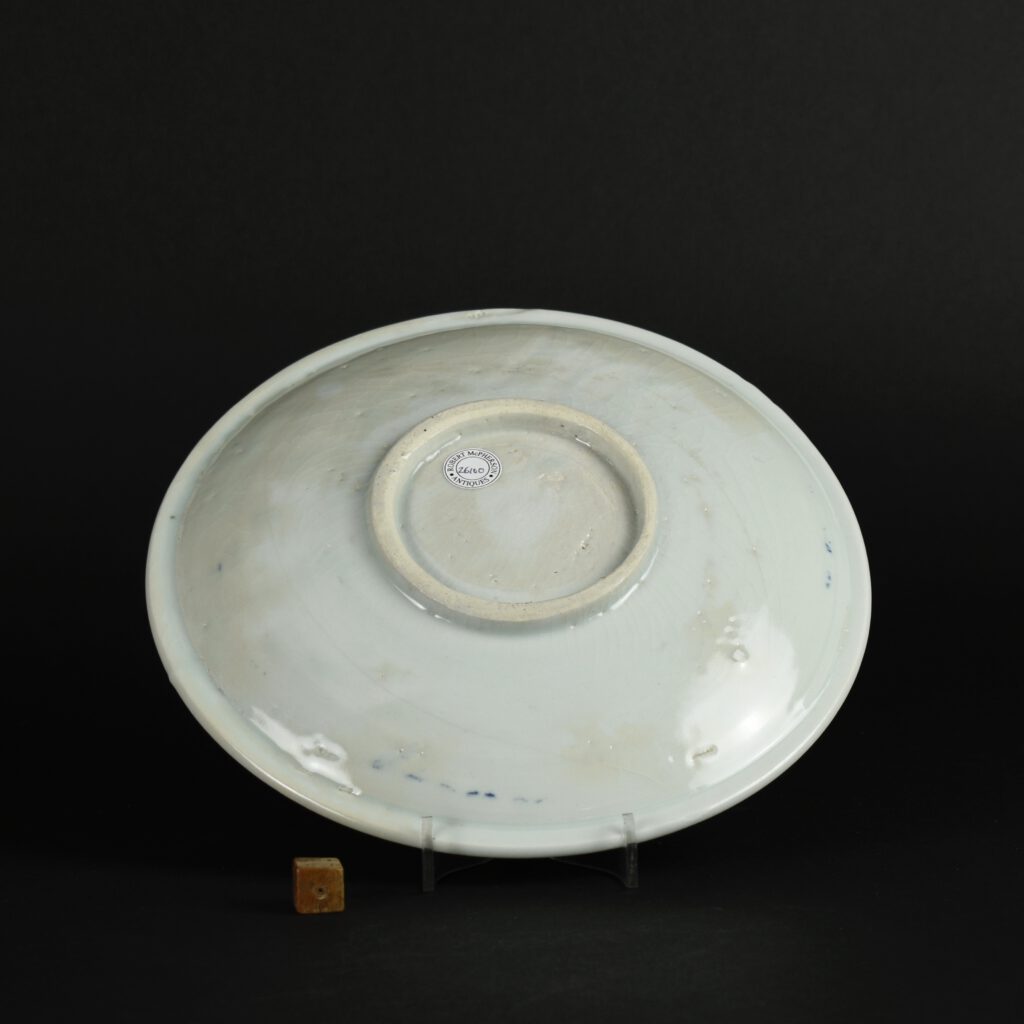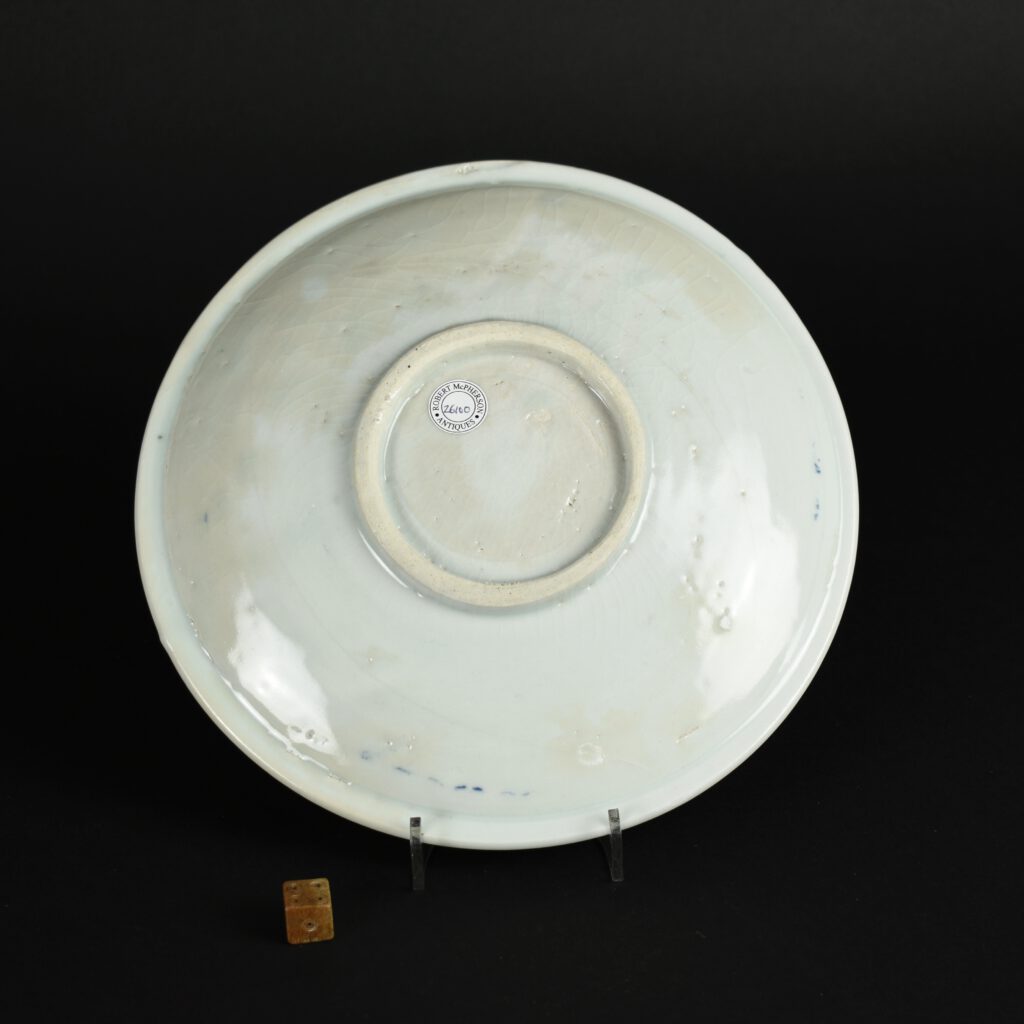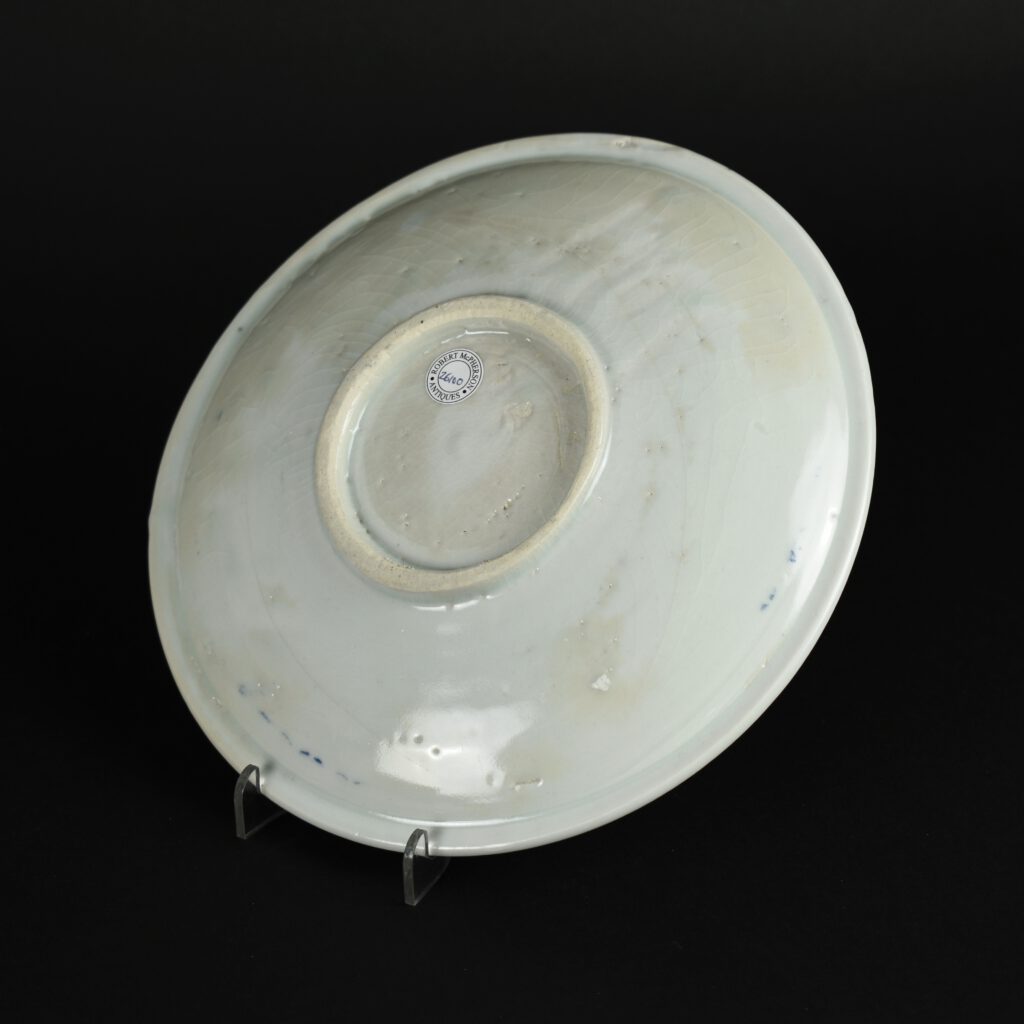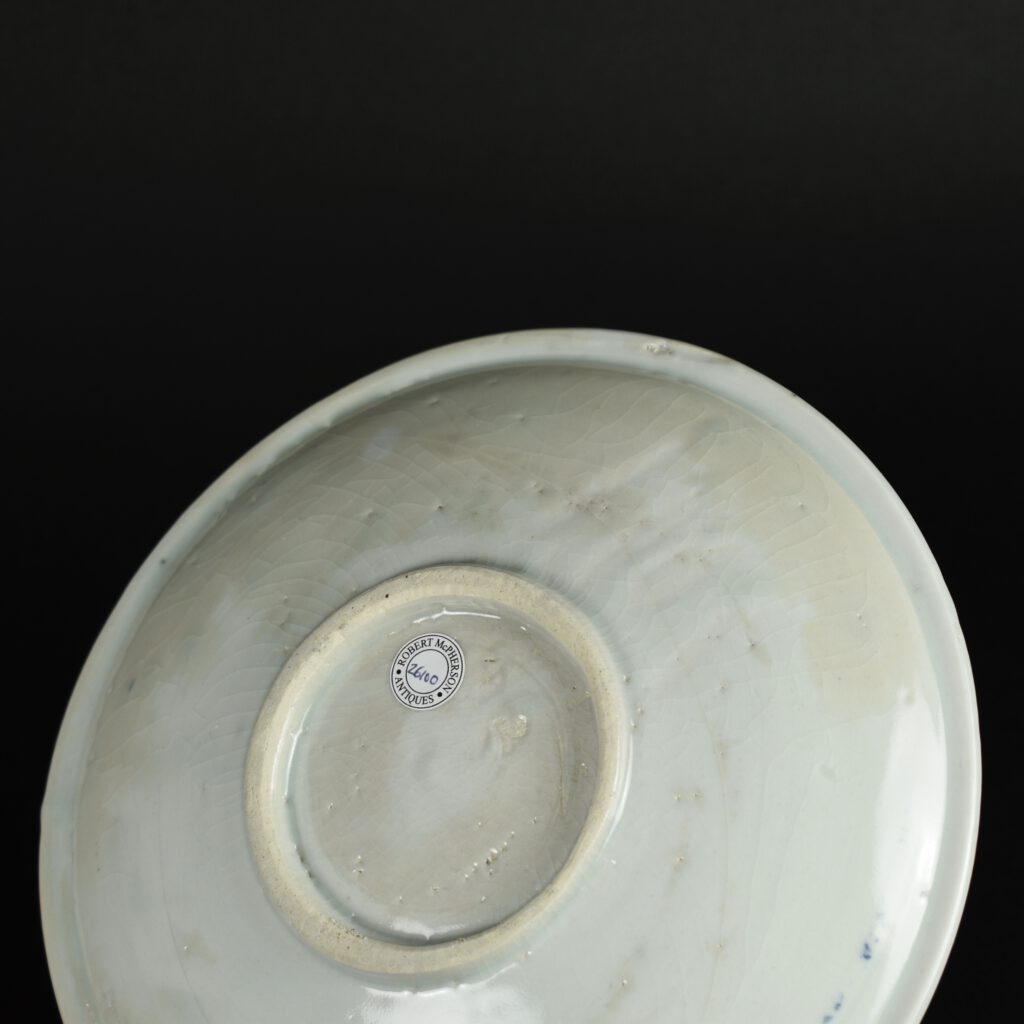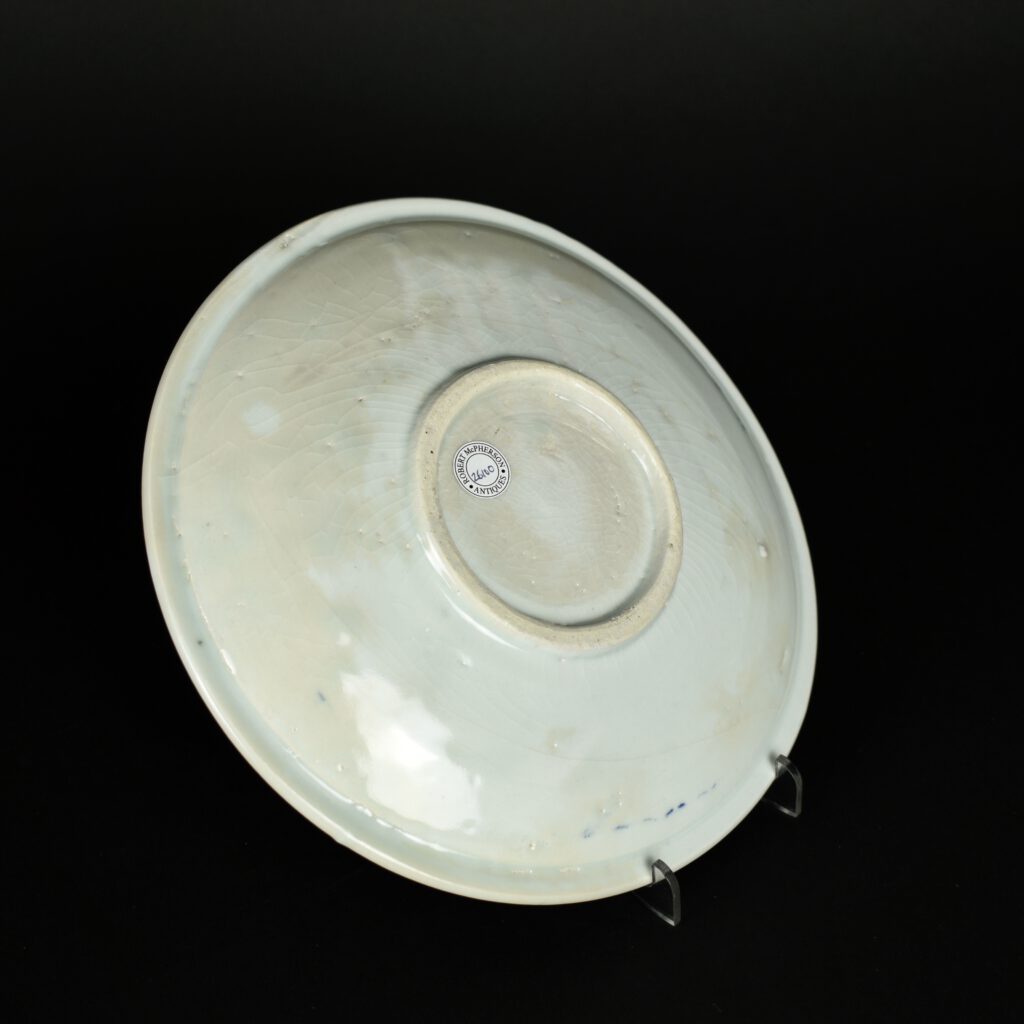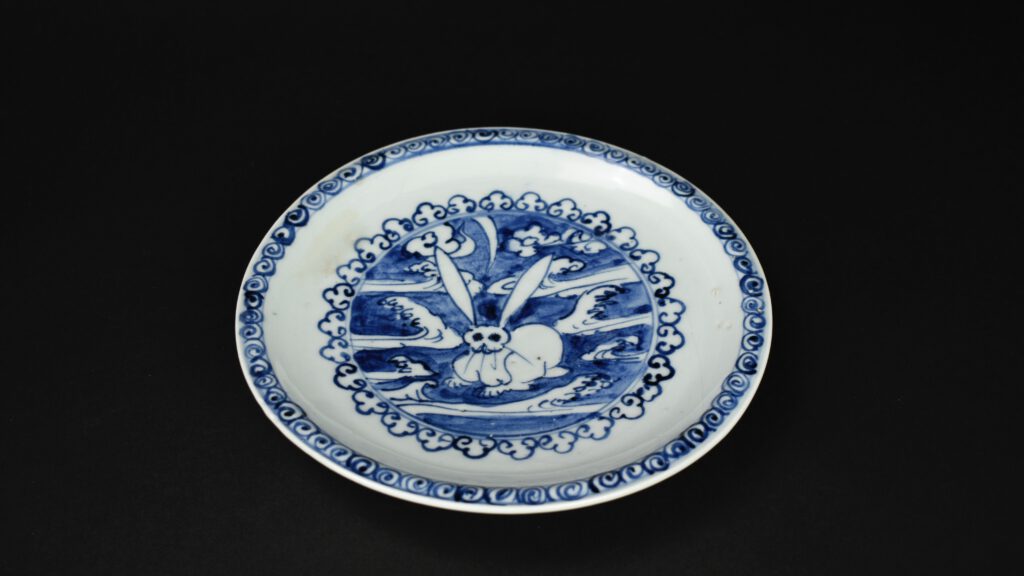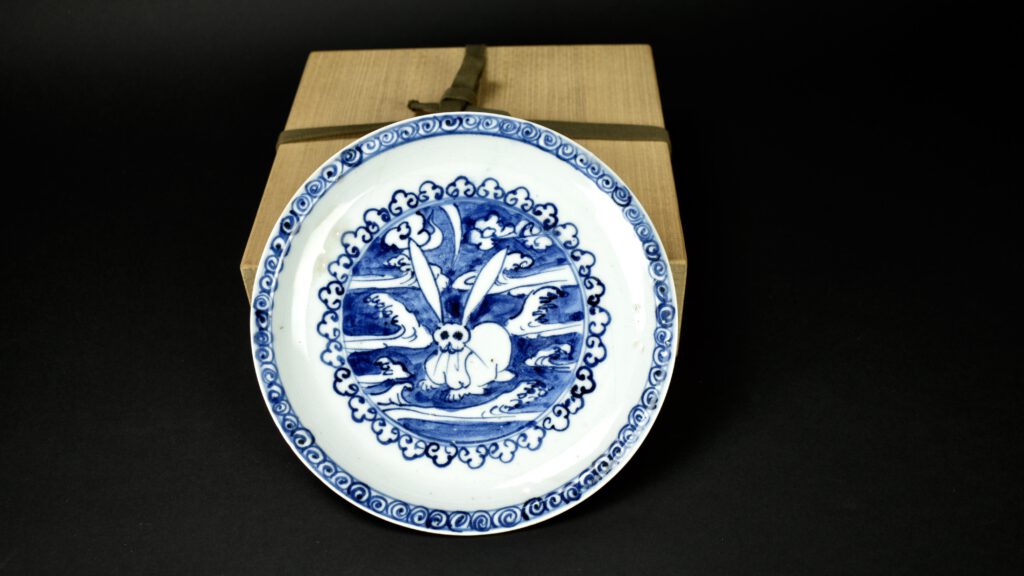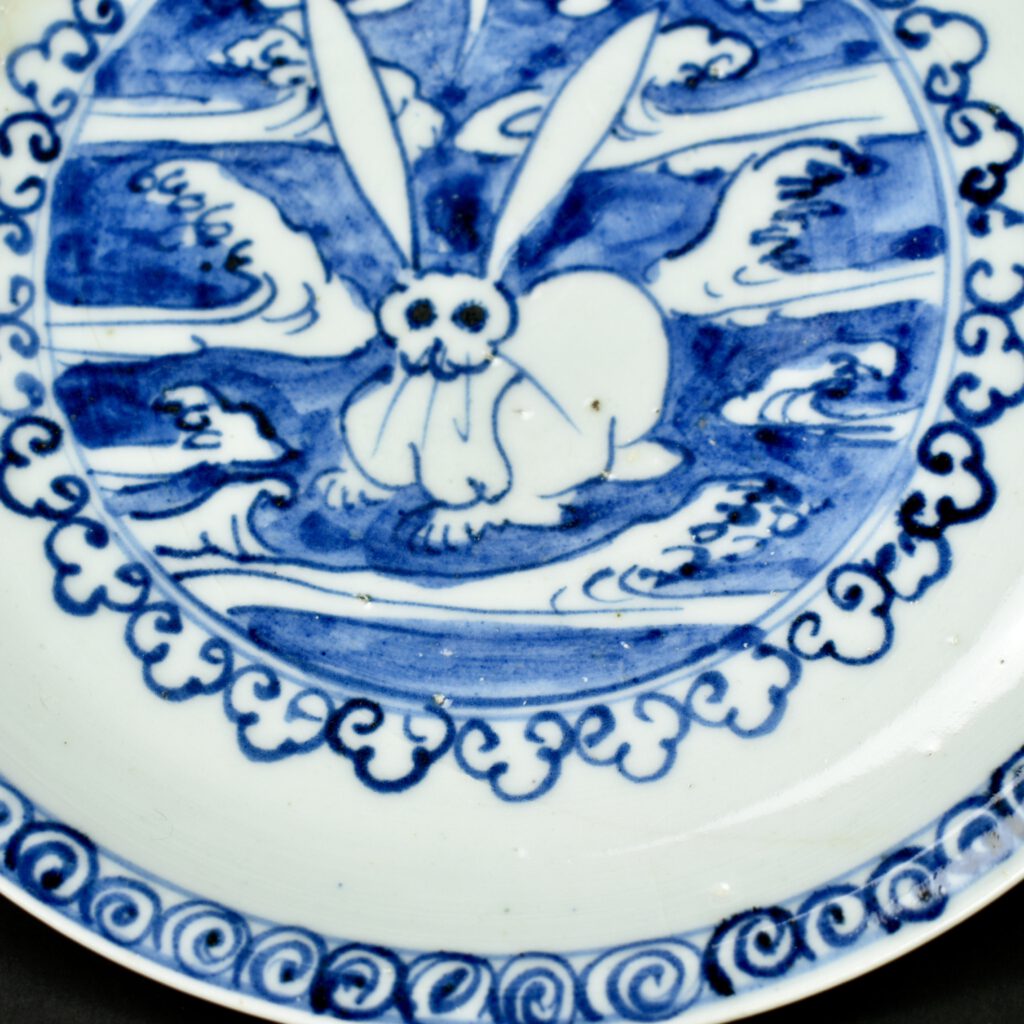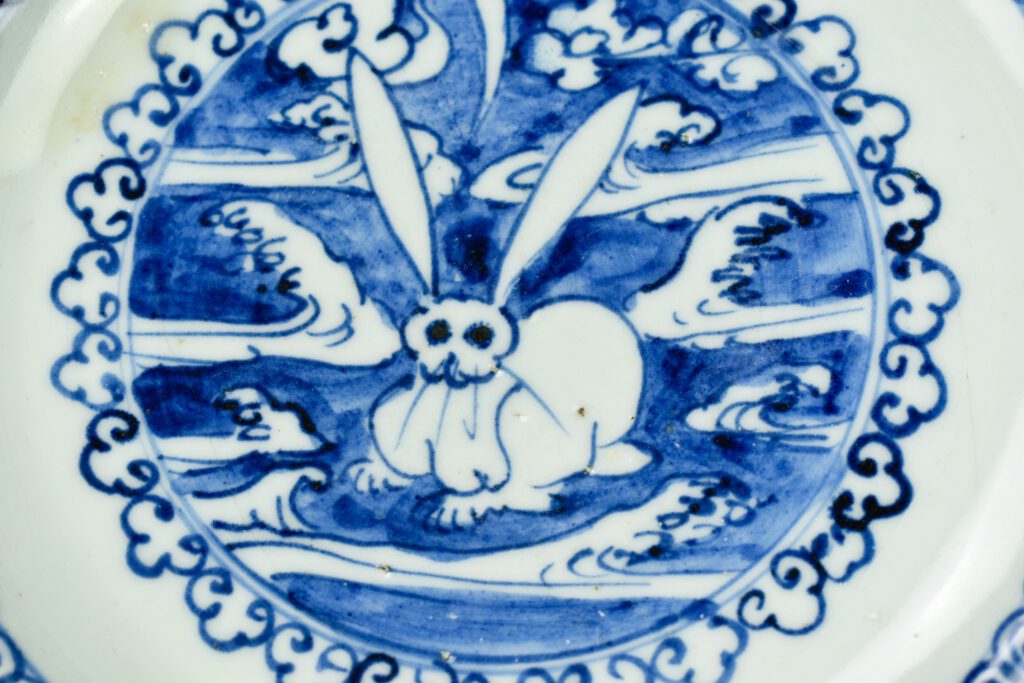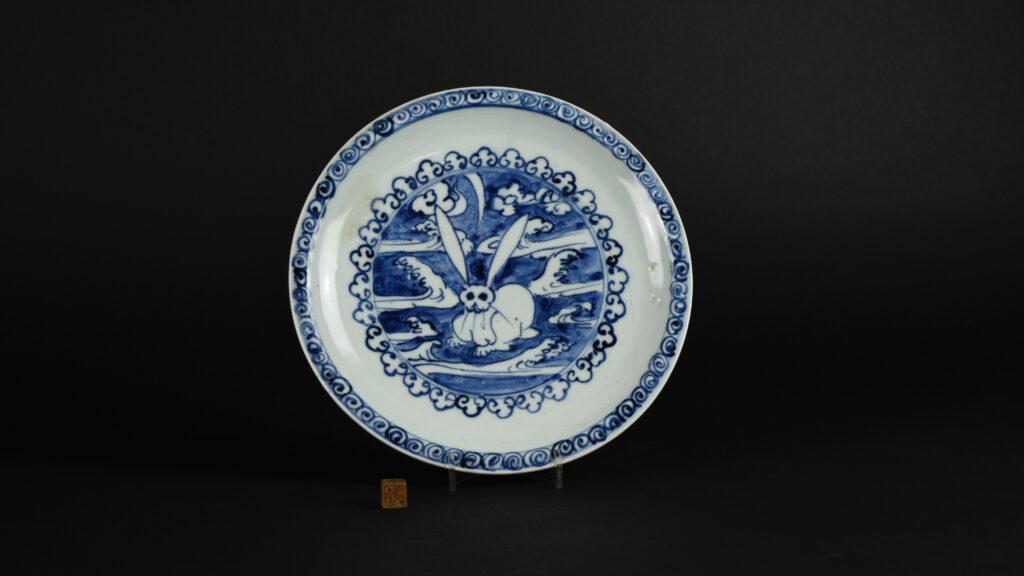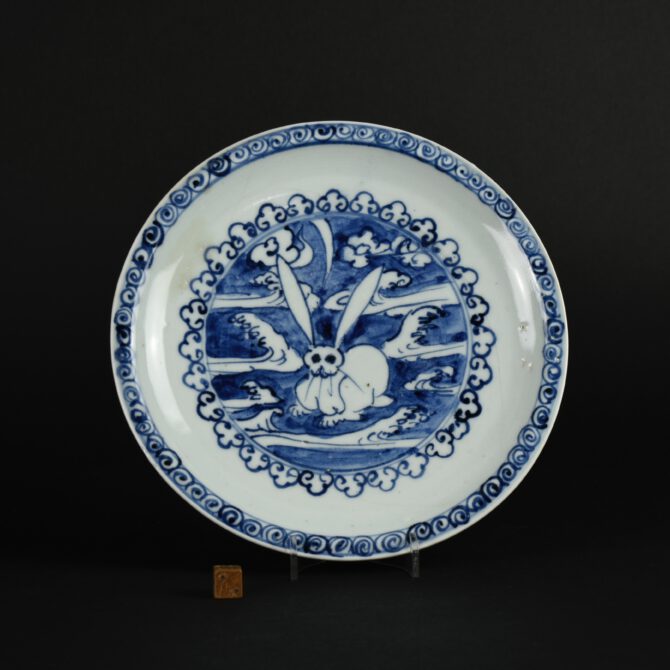
A Fine Early 17th Century Ko-Imari Dish
A Fine Early 17th Century Ko-Imari Dish, Arita Kilns c.1620-1640. A number of these dishes are known, for example at the Metropolitan Museum of Art (for more details see below the picture gallery lower down on the page), however the present dish is a particularly fine example, powerfully painted with a strong clear cobalt oxide. This striking early Japanese porcelain dish illustrates a scene during the night, a large Jill, a female hare, with dark eyes, sits on the waves with the water lapping around her body. The design might refer to the story that suggests the female hare conceives by running on the waves on the eighteenth day of the eight month. The roundel is framed by a Lingzhi (sacred fungus, see more details below the picture gallery) border. A ruyi-sceptre has a part modelled on Lingzhi (sacred fungus), this sceptre is an ancient Chinese object that conveys the holder of it to have what he or she wants. So, the design could be interpreted as a bestowing the wish for children on the recipient of the dish.
SOLD
- Condition
- There are long cracks to the body, some are just in the glaze, others go through. Some pale staining to the left.
- Size
- Diameter 21 cm (8 1/4 inches)
- Provenance
- N/A
- Stock number
- 26100
- References
- For a dish of this striking design dated to 1620 - 1640 see : Complete Catalogue of Shibata Collection (Contributors Saga Kenritsu Kyūshū Tōji Bunkakan. Published by the Kyushu Ceramic Museum, 1990) page 10, plate 0021. For three different rabbit designs of this period see : The Early Kilns of Japan, Arita in the First Half of the Seventeenth Century (Oliver Impey, Clarendon University Press Oxford 1996. ISBN 0-19-826370-8) plate 20 c, d and e.
Information
A Similar Ko-Imari Dish in the Metropolitan Museum of Art
The Met describe the central scene as being a hare among clouds, however the hare is clearly among waves with clouds above.
They date their dish to c.1624-1643.
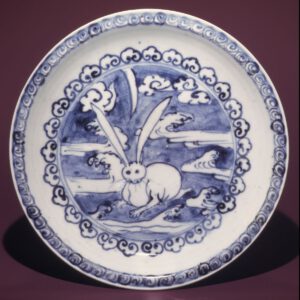
Lingzhi Fungus
Designs in Chinese art often include a Lingzhi Fungus or groups of them. For at leat two thousand years they have appeared in different guises but primarily it is the 'Mushroom of Immortality', it is associated with the god of longevity Shouloa. No exact species can be attributed to Lingzhi fungus but it is a member of the Ganoderma species and is still sold in Chinese herb shops today. Work into the precise nature of this fungus and its health benefits or otherwise are ongoing. A ruyi-sceptre has a part modelled on Lingzhi (sacred fungus), this sceptre is an ancient Chinese object that conveys the holder of it to have what he or she wants. So, the design could be interpreted as a bestowing the wish for children on the recipient of the dish.
